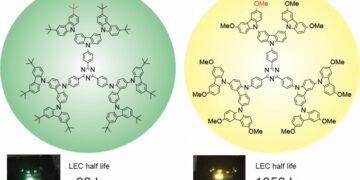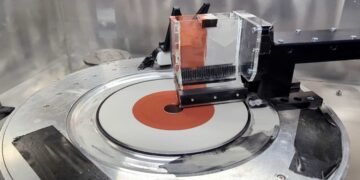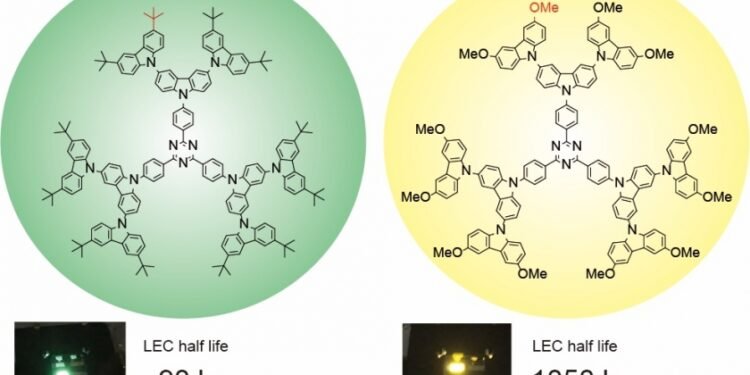The future is bright in eco-friendly lighting materials, just add dendrimers, cellulose and graphene. Researchers from Japan and Germany have developed a new environmental friendly and sustainable electrochemical cell using dendrimers combined with biomass-derived cellulose acetate as an electrolyte and graphene electrode.
In research that could lead to a new generation of lighting, researchers from Japan and Germany have created environmentally friendly electroluminescent cells using new materials called dendrimers combined with electrolytes from biomass and graphene-based and electrodes.
Their findings were published in the journal Advanced Functional Materials.
Electroluminescence is a phenomenon in which a substance emits light in response to the application of an electric current. Everything from the screen you are reading this sentence to the lasers used in advanced scientific research comes from the electroluminescence of various substances. Due to its size and importance in modern times, it is natural that a lot of money has been invested in research and development to improve this technology.
“One such example of emerging technology is ‘electrochemical cells’ or LECs,” said Professor Ken Albrecht of the Institute of Chemistry and Materials Engineering at Kyushu University and one of the study leaders. “They have attracted attention because of their cost advantages over organic light-emitting diodes, or OLEDs. Another reason for the popularity of LECs is their simple process.”
OLED devices often require careful deposition of multiple organic films, making them tricky and expensive to manufacture. On the other hand, LEC can consist of a single layer of organic film mixed with a light source and electrolyte. All of the connected electrodes can be made from inexpensive materials unlike the rare or heavy metals used in OLEDs. In addition, LECs have a lower drive voltage, which means they consume less power.
“Our research team has investigated new organic materials that can be used in LECs. One of them is dendrimers,” said Professor Rubén D. Costa from the Technical University of Munich, who led the research team in Germany. They are molecularly symmetrical polymers whose unique structure has led to their use in everything from medicine to sensors, and now in optics.
Building on their previous work developing dendrimers, the research team began to refine their material for LEC.
” The dendrimer that we developed earlier contained hydrophobic or single water molecules. By replacing it with hydrophilic or water-loving ones, we found that the life of the LEC device can be extended to more than 1000 hours, which is more than 10 times compared to the original one,” explains Albrecht. What makes it even better is that thanks to our collaboration with Dr Costa’s team, the device is very environmentally friendly.”
For several years, the Costa team in Germany has been working on the development of environmentally friendly electroluminescent devices. One of the materials they tested was cellulose acetate, a material commonly used in everything from clothing lines to eyeglass frames.
“We use cellulose acetate derived from biomass as an electrolyte in our new LEC device, and believe it has the same life,” Costa continued. “On the other hand, we also discovered that graphene can also be used as an electrode. This is an important step for creating flexible energy-generating devices using environmentally friendly materials.”
The team explains that although their work shows promise, more research is needed before the device can be commercialized. The device we made here only shines in yellow, so we need to develop it to shine in the three main colors of light: blue, green and red. work,” concluded Albrecht. “Though thanks to our international support, the future is bright.”
Source: Kyushu University





































